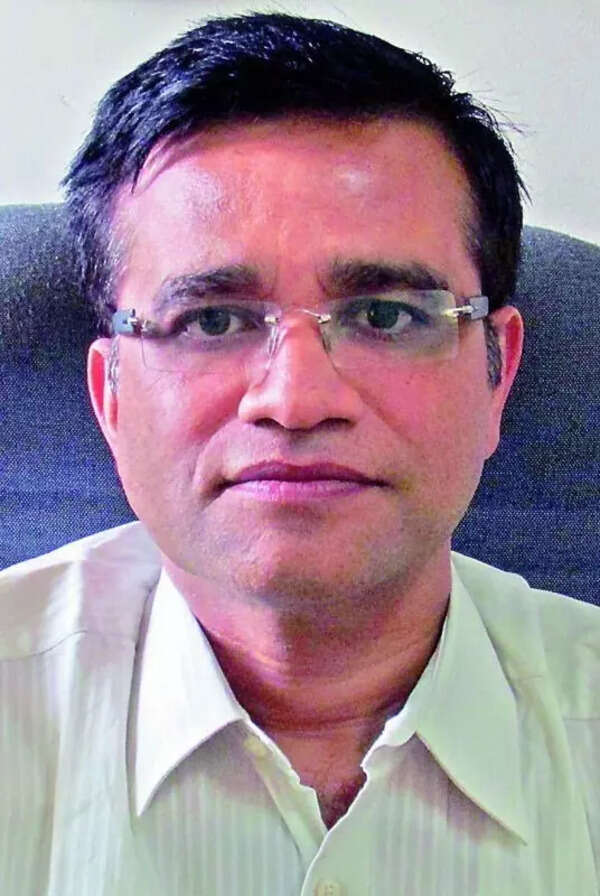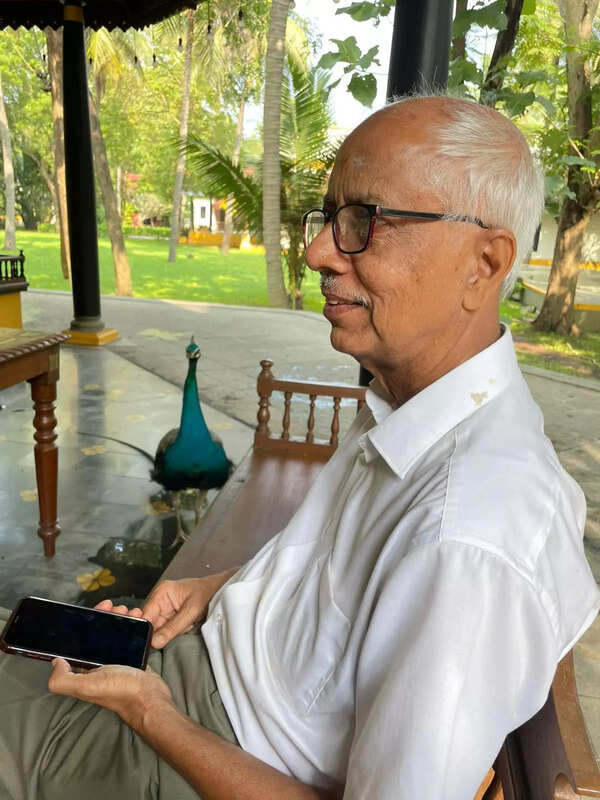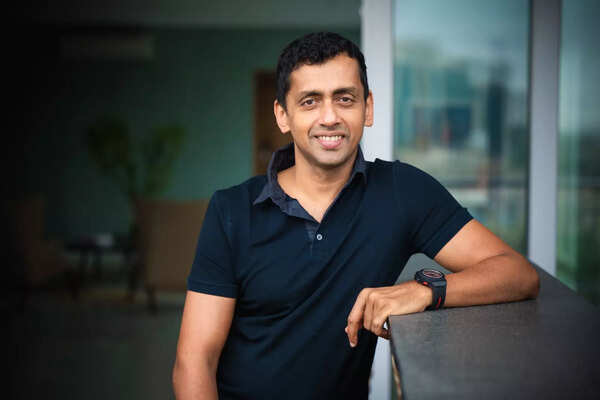Bengalureans who keep their gadgets away say they feel happier when they do thatGadgets outnumber people in most Bengaluru homes. The average daily screen time of Bengalureans is eight hours, says Manoj Sharma of Nimhans who has done extensive studies on gadget addiction. The situation is concerning. Sharma, who oversees the SHUT (Service for Healthy Use of Technology) Clinic at Nimhans, says they attend to about 20 cases every week.
The growing addiction to electronic devices among children has also become a significant concern. Following Nimhans’ recent introduction of an online support group for parents, over 400 people have joined seeking assistance. Most of them required advice on addressing their children’s gaming-related challenges.
Many today spend half of their waking hours staring at screens. Complete disconnection from electronic devices seems impractical. Our daily activities, from purchasing household essentials to maintaining social connections and unwinding after a hard day at work, heavily rely on technology. Ditching gadgets could make us feel lonely and create practical challenges. Nonetheless, many are now realising that electronic devices can only offer synthetic happiness. They are limiting their device usage with some even opting for simpler mobile phones. And they say they are happier now.
Unplug and reconnect with yourselfWhen 41-year-old Ramya Shripathi first heard about digital detox, she thought it was impossible to disconnect from screens. “I had tried deleting WhatsApp but then realised it was useful especially for official communication or kid’s school-related communication,” she says. Meanwhile, the constant buzzing in groups would leave her anxious, wanting to check her phone again and again, to the point of making her feel miserable and helpless.
It took Ramya a lot of effort to reclaim her life. Ever since she became a life coach, she has been practising digital detox and noticing the benefits of screen-free time.
N Ramakrishnan vouches for it too. A resident of One Bangalore West Apartment in Rajajinagar, Ramakrishnan has reduced his daily screen time from 12 to two hours. The 73-year-old had worked in the IT sector for many years, where long hours in front of computer screens were routine. Additional exposure to television, mobile phones, and laptops further increased screen dependency.
After moving to the gated community and being elected as president of the residents’ association, he found ways to get away from gadgets and keep himself occupied. “I invested effort in understanding the intricacies of residential complex management. This led to an increased focus on outdoor activities. I started learning tennis and encouraged others to learn badminton, cricket and other outdoor activities. I also created a group for sloka chanting and another for musical activities that have fostered a community spirit,” he says.
Remedies for pathological trading and porn addictionOne of Sharma’s patients suffered substantial losses due to compulsive online trading activities. The patient’s family sought help. He was asked to use a basic phone instead of a smartphone. “It really worked. The basic phone reduced his access to trading, controlled his urges to browse, and helped him recover from the addiction,” Sharma recalls.
Another case involved a young adult seeking assistance for pornography addiction. The addiction began affecting both his personal and work life significantly. “He used pornography as a coping mechanism to improve his emotional state. Despite addressing the psychological aspects through counselling sessions, he continued to report strong cravings and difficulty in controlling his urges,” recalls Sharma. He then decided to implement a more fundamental approach – restrict the patient’s access to such content by recommending a basic phone with minimal features. That helped the patient overcome the porn addiction and take back control of his life. “He even started engaging in other activities that improved his productivity and overall feeling of well-being,” says Sharma.
The crucial factor in digital detoxing, Sharma says, is identifying specific triggers. “These could be feelings of loneliness, excess free time, easy access to technology, or other psychological conditions. Once these triggers and their associations are recognised, appropriate coping mechanisms can be employed,” he says.
VOICE BOX‘Leaders should make offline life more meaningful, vibrant’I’ve brought down my average screen time to just 90 minutes a day.

Dr Sparsha S Vasisht
I delivered my daughter six months ago. I’ve kept all gadgets including my phone away since pregnancy. It allows me to give more attention to my baby and keep myself and her radiation free. Nowadays, I use my phone only if my patients need me to attend to them. I am mindful of my social media usage as well.Dr Sparsha S Vasisht, RESIDENT, MALLESWARAMPeople should seek help when electronic devices become an overwhelming focus in their daily routines, hindering their ability to operate without them.

Manoj Sharma
The constant preoccupation with devices could also result in various negative outcomes including health problems, physical exhaustion, reduced productivity, or strained family relationships. When these indicators appear, one should either implement personal digital detox strategies or obtain professional assistance.Manoj Sharma, Coordinator, SHUT (Service for Healthy Use of Technology) Clinic, NIMHANS.During my juggle between heavy academic reading, household responsibilities, raising teenagers and preparing lessons, brief Instagram breaks provided momentary escape. However, as I noticed signs of dependency, I sought methods to reduce its usage.

Ikroop Chamba
I changed my Instagram app’s name to restrict my access. Now I don’t even know how the app is renamed on my phone. The reduction in device usage sharpened my concentration. It has also led to improved sleep quality and better overall wellbeing.Ikroop Chamba, ASSISTANT PROFESSOR, CHRIST UNIVERSITYBy silencing app notifications and letting go of the need to respond immediately to messages and calls, I have reduced anxiety and improved my sleep. I don’t keep any gadgets in my bedroom.

Ramya Shripathy
I also prioritise mindful moments – eating without gadgets, taking mindful walks, or just being with my thoughts. I have learnt to appreciate the beauty of solitude. Morning journaling has enhanced my creativity and I make time for activities like reading and doodling. Ramya Shripathi, LIFE COACH, KORAMANGALAReducing screen time takes a lot of discipline. I have managed to reduce it from 12 hours to two hours. Keep yourself occupied so you don’t feel tempted to get hooked to your gadgets. Now I work with the sustainability committee, particularly focussing on water conservation and waste management. Residents are guided on wet waste composting, with the resulting compost being utilised to grow vegetables and greens on balconies.

N Ramakrishnan
We exchange plants and seeds and collect old clothes and shoes to be donated to the underprivileged. I encourage residents to use intercoms and participate in face-to-face conversations within common areas, rather than depending on messaging. Walking and networking have further promoted understanding of the challenges and requirements faced by community members, assisting in providing timely support. All these have been made possible as I made a conscious decision to reduce my screen time. N Ramakrishnan, 73, RESIDENT AND SUSTAINABILITY COMMITTEE MEMBER, ONE BANGALORE WESTPeople get addicted to gadgets because the real world is dull and boring. It often fails to compete with the digital one. People don’t resist digital detox. They just need a better experience.

Arun Chittilappilly
As leaders, planners and creators, our job is to make offline life more meaningful, vibrant and worth showing up for. That’s the kind of environment we should be building – one where digital balance is not enforced but enabled.Arun K Chittilappilly, Executive Chairman & MD, Wonderla Holidays






















